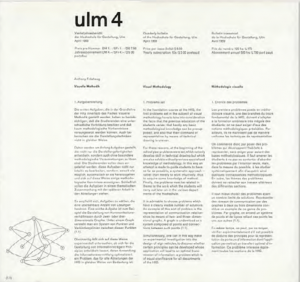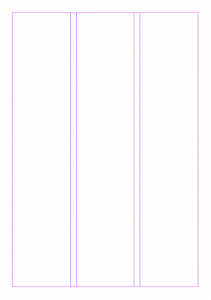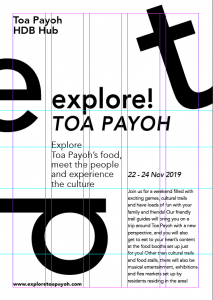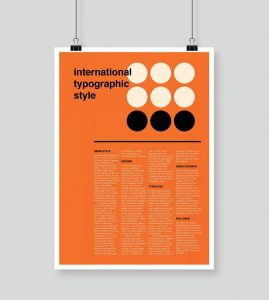
The International Typographic Style is a graphic design style that emerged in Russia, the Netherlands, and Germany in the 1920s and was further developed by designers in Switzerland during the 1950, and originally spread from Switzerland. It has had profound influence on graphic design as a part of the modernist movement, impacting many design-related fields including architecture and art. There is an emphasis on readability, cleanliness and objectivity.
Objective photography, asymmetric arrangement of information and the use of sans-serif typefaces were common in this era. The style is also associated with a preference for photography in place of illustrations or drawings. This style focused on the organising of information into a very structured layout, and can be done commonly using an underlying typography grid, as shown below.

As I am currently taking Typography I and in progress of projects that make use of these grids to complete, I am particularly interested. Although the grids are restrictive in the sense that you can’t place text wherever you want (for example, in the middle of the grid), it acts as a guideline for designers to arrange text in a organised way, and allowing text to flush to either the right or the left, creating a paragraph with every line starting on the same line to allow easier reading. Below attached is an example of a poster designed with the help of the typography grids, as well as one of mine when I was exploring with the grids during one of my typography projects.


Through these 4 lectures, I’ve learnt more about the art movements in the History of VisComm and the art styles that has in a way or another influenced the art now. Desmond has been quite clear of the information he wanted to articulate and the bi-weekly quizzes have been helpful in the sense that it kept us on our toes and also did not result in too much stress due to the amount of content needed for each quiz. Thank you for the past 4 weeks! 🙂
